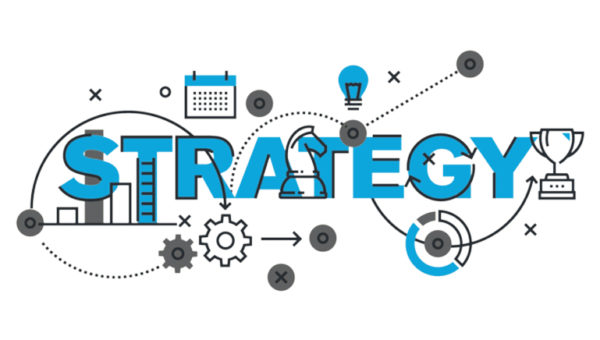Merchant Seller Acquisition Onboarding Agency in Delhi
Merchant Seller Acquisition Onboarding Agency in Delhi
Seller Acquisition – Marketplace or B2B and B2C eCommerce Platform
How to Attract Sellers on Your Virtual Multi Vendor Marketplace
Fulcrum is here when you are ready to expand your business or realign company resources. Whether buying or selling, we can help you successfully navigate through the acquisition process. Our team has more than one billion hours of managed fieldwork and on ground work experience and more than 10 years of experience working with across industries. In short, we know a lot of on ground work people, which is an invaluable resource in any industry. Looking to buy or sell? You’ve come to the right place. We’ll connect you with the acquisition partners that make sense for your business.
Field Sales Teams
Seller acquisition through field sales teams is the most effective and cost efficient way to build up sellers on an e-commerce platform. The client wanted to drive seller acquisition for its e-commerce portal through Fieldwork and the scope of work included:
- Planning of target cities, markets and categories
- Representatives should be based in the territory
- Field teams hiring, training and operations management
- Develop a field deployment plan
- Local languages spoken team
- Seller Acquisition Agent Support, Freelance support
- End-to-end seller onboarding and reporting to client
- Daily Acquisition report and Target Planing
- Follow-up

Seller Training And Support Service
- Registration and KYC
- Provide training and awareness of products and services
- Motivating merchants
- Cataloging – Products Upload
- Account Management Training
Lead Generation, Successful Onboarding, incubation and growth of these Sellers on Client Marketplace.
Work Experience
# Marketplaces OR E-commerce
# On-demand Service Platforms
# Utility Platforms
# Payment and Fintech Apps
# Online Business Directory
# Education And Learning Platform
# Content Distribution Platforms
We will also help the leadership team build business plans, deliver industry insights and best practices, and identify new opportunities to improve the customer base and business.
Ownership of day-to-day operations to ensure all deliverables are met in time and the onboarding team are never short of high quality leads
We will be responsible for lead generation, successful onboarding, incubation and growth of these sellers on Client Marketplace or eCommerce Platform
Merchant Acquisition
Retailer Acquisition
Seller Acquisition
Customer Acquisition
-
- Focus on acquiring high value sellers to join and start selling on portal
- Responsible for managing relationship with sellers after acquisition including supporting the onboarding and incubation process for these sellers.
- Provide market insights from seller’s’ perspective, including understanding products, sellers, market & competitor dynamics
The project successfully met its objectives and the key highlights were as follows:
- New sellers were on-boarded for different categories across 20+ cities
- There was no compromise on seller quality and quality of sellers increased as desired by client
- Detailed training and effective management of the filed teams ensured high productivityApproach
The key activities in project execution were as follows:

Approach
The key activities in project execution were as follows:
Project team hiring and onboarding – We hired project team members who were from e-commerce background and had significant experience in e-commerce merchant acquisition and onboarding
Detailed training program and development of objection handling documents – We conducted a detailed training and induction program for each sales team member and each of them was given a FAQ document for ready reference and fast sales closures
Elevation of top performers – The top performing sales persons were elevated to Team Leader position resulting in higher motivation, better people management and more closures
Setting up your Seller Acquisition

Setting up your Seller Acquisition
- Prepare your seller acquisition goals
- Define your target sellers
- Find the sellers that match your needs
- Reach out ( Offer ) and bring them in
- Track your key success metrics
Get in touch with us
Let us help you plan and execute a great marketing strategy.
Merchant Seller Acquisition Onboarding Agency in Delhi
DELHI
Delhi, officially the National Capital Territory (NCT) of Delhi, is a city and a union territory of India containing New Delhi, the capital of India. It is bordered by the state of Haryana on three sides and by Uttar Pradesh to the east. The NCT covers an area of 1,484 square kilometres (573 sq mi). According to the 2011 census, Delhi’s city proper population was over 11 million, the second-highest in India after Mumbai,while the whole NCT’s population was about 16.8 million. Delhi’s urban area is now considered to extend beyond the NCT boundaries, and include the neighbouring satellite cities of Ghaziabad, Faridabad, Gurgaon and Noida in an area called the National Capital Region (NCR) and had an estimated 2018 population of over 28 million people, making it the world’s second-largest urban area according to the United Nations. Recent estimates of the metro economy of its urban area have ranked Delhi either the most or second-most productive metro area of India. Delhi is the second-wealthiest city in India after Mumbai and is home to 18 billionaires and 23,000 millionaires.Delhi ranks fifth among the Indian states and union territories in human development index. Delhi has the second-highest GDP per capita in India. Delhi is of great historical significance as an important commercial, transport, and cultural hub, as well as the political centre of India.
Delhi is one of the oldest cities in the world, and has been continuously inhabited since the 6th century BCE. Through most of its history, Delhi has served as a capital of various kingdoms and empires, most notably the Tomars, Chahamanas, Delhi Sultanate and Mughals. It is also assumed to be the location of Indraprastha, the capital of the Pandavas in the epic Mahabharata. The city has been captured, ransacked and rebuilt several times, particularly during the medieval period, and modern Delhi is a cluster of a number of cities spread across the metropolitan region. For many centuries Delhi has been a dominant trading and commercial centre in northern India, and since the 1990s it has emerged as an important node in the international corporate and financial network.
HISTORY

The area around Delhi was probably inhabited before the second millennium BCE and there is evidence of continuous inhabitation since at least the 6th-century BCE. There was Ochre Coloured Pottery culture in Red fort area which began around c.2600 BCE. Around c.1200 BCE the region was inhabited by people of Painted Grey Ware culture and was part of Kuru Kingdom. The city is believed to be the site of Indraprastha, the legendary capital of the Pandavas in the Indian epic Mahabharata. According to the Mahabharata, this land was initially a huge mass of forests called ‘Khandavaprastha’ which was burnt down by the Pandavas to build the city of Indraprastha. Later Kurus were defeated by the non-Vedic Salva tribe.
The earliest architectural relics date back to the Maurya period (c. 300 BCE); in 1966, an inscription of the Mauryan Emperor Ashoka (273–235 BCE) was discovered near Srinivaspuri. Remains of several major cities can be found in Delhi. The first of these were in the southern part of present-day Delhi. King Anang Pal of the Tomara dynasty founded the city of Lal Kot in 1052 CE. Prithviraj Chauhan conquered Lal Kot in 1178 and renamed it Qila Rai Pithora.
GEOGRAPHY
Delhi, a true cosmopolitan city with diversified culture is the capital of the world’s largest democracy, India. Known as Indraprastha in ancient times.
The state is spread over an area of 1483 square kilometer. According to the Indian geography the state is located at the center of the Indian subcontinent, amidst the ranges of Himalaya and the Aravalli. Delhi has been wooed by rulers, attracted invaders and has been build and destroyed several times. Historians say that is has been rebuilt seven times during different ages.
Situated on the banks of river Yamuna, Delhi is located at 28.38° N and 77.13° E on the northern part of India. There are three major geographical regions: the Yamuna flood plain, the ridge & the Gangetic Plains. The Yamuna flood plains provide fertile soil suitable for agriculture. However, these plains are prone to recurrent floods. With an average altitude of 293 m above sea level, the ridge forms the most dominating feature in this region.
Delhi comprises of 200 villages which are heavily populated.Haryana and Uttar Pradesh are the other states, which share their borders with Delhi in the west and east respectively.
It originates from the Aravalli Hills in the south and encircles the west, north-east and north-west portions of the city. The Great Plains are located in the south of the city and cover most of Delhi.
Delhi geography gives an overview of the capital city of India bearing a rich cultural background.

ECONOMY
Delhi is the largest commercial center in northern India. As of 2016 recent estimates of the economy of the Delhi urban area have been around $370 billion (PPP metro GDP) ranking it either the most or second-most productive metro area of India. The nominal GSDP of the NCT of Delhi for 2016–17 was estimated at ₹6,224 billion (US$87 billion), 13% higher than in 2015–16. As per the Economic survey of Delhi (2005–2006), the tertiary sector contributes 70.95% of Delhi’s gross SDP followed by secondary and primary sectors with 25.20% and 3.85% contributions, respectively.[ Delhi’s workforce constitutes 32.82% of the population, and increased by 52.52% between 1991 and 2001. Delhi’s unemployment rate decreased from 12.57% in 1999–2000 to 4.63% in 2003. In December 2004, 636,000 people were registered with various employment exchange programmes in Delhi.
In 2001 the total workforce in national and state governments and the quasi-government sector was 620,000, and the private sector employed 219,000. Key service industries are information technology, telecommunications, hotels, banking, media and tourism. Construction, power, health and community services and real estate are also important to the city’s economy. Delhi has one of India’s largest and fastest growing retail industries. Manufacturing also grew considerably as consumer goods companies established manufacturing units and headquarters in the city. Delhi’s large consumer market and the availability of skilled labour has also attracted foreign investment. In 2001, the manufacturing sector employed 1,440,000 workers and the city had 129,000 industrial units.
DELHI DISTRICT’S
There are eleven administrative or revenue districts in Delhi. Each of these district is headed by a District Magistrate (DM) also called Deputy Commissioner (DC), who reports to the Divisional Commissioner of Delhi. These 11 districts are divided into 33 sub-divisions of Delhi, each headed by a Sub-Divisional Magistrate (SDM).
The district administration of Delhi is the enforcement department for all kinds of the Government of Delhi’s policies and exercises supervisory powers over numerous other functionaries of the government.
New Delhi serves as the capital of India and is the seat of all three branches of the government, Executive (Rashtrapati Bhavan), Legislature (Sansad Bhavan) and Judiciary (Supreme Court). Similarly, Delhi is divided into 15 Police Districts, each headed by an IPS officer of the rank of Deputy Commissioner of Police (DCP).
![]()
more info
Delhi, city and national capital territory, north-central India. The city of Delhi actually consists of two components: Old Delhi, in the north, the historic city; and New Delhi, in the south, since 1947 the capital of India, built in the first part of the 20th century as the capital of British India.
One of the country’s largest urban agglomerations, Delhi sits astride (but primarily on the west bank of) the Yamuna River, a tributary of the Ganges (Ganga) River, about 100 miles (160 km) south of the Himalayas. The national capital territory embraces Old and New Delhi and the surrounding metropolitan region, as well as adjacent rural areas. To the east the territory is bounded by the state of Uttar Pradesh, and to the north, west, and south it is bounded by the state of Haryana.
Lutyens Trust Photographic Archive; photograph, Andrew W. Barnett
Delhi is of great historical significance as an important commercial, transport, and cultural hub, as well as the political centre of India. According to legend, the city was named for Raja Dhilu, a king who reigned in the region in the 1st century BCE. The names by which the city has been known—including Delhi, Dehli, Dilli, and Dhilli, among others—likely are corruptions of his name. Area Old Delhi, 360 square miles (932 square km); national capital territory, 573 square miles (1,483 square km). Pop. Old Delhi, (2001) 12,260,000; national capital territory, (2001) 13,850,507; Old Delhi, (2011) 11,007,835; national capital territory, (2011) 16,753,235
![]()
demographices
According to the 2011 census of India, the population of NCT of Delhi is 16,753,235.[199] The corresponding population density was 11,297 persons per km2 with a sex ratio of 866 women per 1000 men, and a literacy rate of 86.34%. In 2004, the birth rate, death rate and infant mortality rate per 1000 population were 20.03, 5.59 and 13.08, respectively.[200] In 2001, the population of Delhi increased by 285,000 as a result of migration and by 215,000 as a result of natural population growth,[200] which made Delhi one of the fastest growing cities in the world. Dwarka Sub City, Asia’s largest planned residential area, is located within the National Capital Territory of Delhi.[201] Urban expansion has resulted in Delhi’s urban area now being considered as extending beyond the NCT boundaries to incorporate the towns and cities of neighbouring states including Faridabad and Gurgaon of Haryana, and Ghaziabad and Noida of Uttar Pradesh, the total population of which is estimated by the United Nations at over 28 million. According to the UN this makes Delhi urban area the world’s second-largest, after Tokyo,[8] although Demographia declares the Jakarta urban area to be the second-largest.[202] The 2011 census provided two figures for urban area population: 16,314,838 within the NCT boundary,[203] and 21,753,486 for the Extended Urban Area.[204] The 2021 regional plan released by the Government of India renamed the Extended Urban Area from Delhi Metropolitan Area (DMA) as defined by the 2001 plan[205] to Central National Capital Region (CNCR).[205][206] Around 49% of the population of Delhi lives in slums and unauthorized colonies without any civic amenities.[207] The majority of the slums have inadequate provisions to the basic facilities and according to a DUSIB report, almost 22% of the people do open defecation.[208]
Major social groups of Delhi include Ahir, Brahmins, Jats, Punjabis, Purvanchalis, Vaishyas, Gujjars, Sikhs, Muslims, Uttarakhandis, Bengalis, etc.
| Population Growth of Delhi | |||
|---|---|---|---|
| Census | Population | %± | |
| 1901 | 405,819 | — | |
| 1911 | 413,851 | 2.0% | |
| 1921 | 488,452 | 18.0% | |
| 1931 | 636,246 | 30.3% | |
| 1941 | 917,939 | 44.3% | |
| 1951 | 1,744,072 | 90.0% | |
| 1961 | 2,658,612 | 52.4% | |
| 1971 | 4,065,698 | 52.9% | |
| 1981 | 6,220,406 | 53.0% | |
| 1991 | 9,420,644 | 51.4% | |
| 2001 | 13,782,976 | 46.3% | |
| 2011 | 16,753,235 | 21.6% | |
transport
AIR
Indira Gandhi International Airport, situated to the south-west of Delhi, is the main gateway for the city’s domestic and international civilian air traffic. In 2015–16, the airport handled more than 48 million passengers,[165] making it the busiest airport in India and South Asia. Terminal 3, which cost ₹96.8 billion (US$1.4 billion) to construct between 2007 and 2010, handles an additional 37 million passengers annually.[166] In 2010, IGIA was conferred the 4th best airport award in the world in the 15–25 million category, by Airports Council International. The airport was rated as the Best airport in the world in the 25–40 million passengers category in 2015, by Airports Council International. Delhi Airport was awarded The Best Airport in Central Asia and Best Airport Staff in Central Asia at the Skytrax World Airport Awards 2015.
![]()
ROAD
Delhi has the highest road density of 2103 km/100 km2 in India.[174] It is connected to other parts of India by five National Highways: NH 1, NH 2, NH 8, NH 10 and NH 24. The Delhi–Mumbai and Delhi–Kolkata prongs of the Golden Quadrilateral start from the city. The city’s road network is maintained by MCD, NDMC, Delhi Cantonment Board, Public Works Department (PWD) and Delhi Development Authority.[175]
Buses are the most popular means of road transport catering to about 60% of Delhi’s total demand.[176] Delhi has one of India’s largest bus transport systems. In 1998, the Supreme Court of India ruled that all public transport vehicles in Delhi must be fuelled by compressed natural gas (CNG) to tackle increasing vehicular pollution.
![]()
RAILWAY
Delhi is a major junction in the Indian railway network and is the headquarters of the Northern Railway. The main railway stations are New Delhi, Old Delhi, Hazrat Nizamuddin, Anand Vihar, Delhi Sarai Rohilla and Delhi Cantt.[183] The Delhi Metro, a mass rapid transit system built and operated by Delhi Metro Rail Corporation (DMRC), serves many parts of Delhi and the neighbouring cities Ghaziabad, Faridabad, Gurgaon and Noida.
![]()
METRO
The Delhi Metro is a rapid transit system serving Delhi, Ghaziabad, Faridabad, Gurgaon and Noida in the National Capital Region of India. Delhi Metro is the world’s tenth-largest metro system in terms of length. Delhi Metro was India’s second modern public transportation system. The network consists of eleven lines with a total length of 311 kilometres (193 miles) with 214 stations, which are a mix of underground, at-grade and elevated stations. All stations have escalators, lifts, and tactile tiles to guide the visually impaired from station entrances to trains.
![]()
RESEDENTIAL AREAS
BLANK MAM
![]()
MARKET(CHANDANI CHOWK Market)
It is a shopping district that exists for hundred of years. Exploring the district’s winding and narrow alleys is such an adventure. The chowk’s lanes is divided into bazaars of specialization. One will find fabrics in Katra Neel. In the Bha